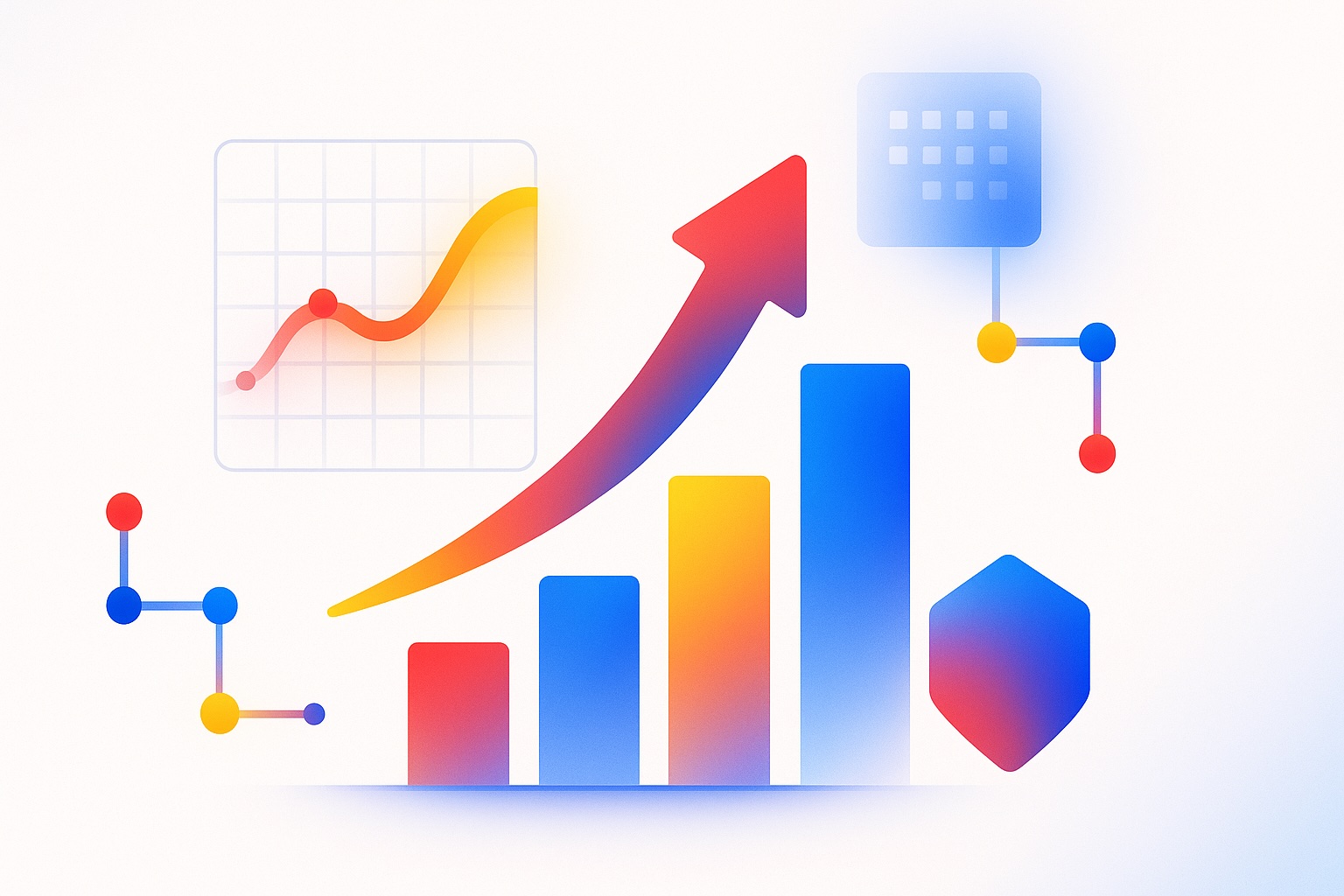
Maximizing Data Efficiency in 2025: Key Strategies for Growth and Innovation

Maximizing Data Efficiency in 2025: Key Strategies for Growth and Innovation
As we advance deeper into 2025, organizations face an unprecedented data challenge:
How to efficiently manage, process, and derive value from vast, complex, ever-growing datasets — while remaining agile in a fast-changing environment.
Businesses that succeed at data efficiency aren’t just faster — they’re smarter, more resilient, and better positioned for innovation.
In this article, we’ll explore the key trends, strategies, and next steps you need to know to maximize your data investments this year and beyond.
The Evolution of Data Management: Where We Are in 2025
Over the past decade, data management has evolved from simple storage solutions into highly complex ecosystems.
Today’s leading organizations treat data as a strategic asset, investing heavily in technologies and architectures that enable real-time insights, AI-driven automation, and seamless multi-cloud operations.
Several forces are accelerating this evolution:
- Exponential data growth from IoT devices, applications, and customer interactions
- The democratization of analytics, pushing insights closer to frontline workers
- Stricter data governance regulations, such as GDPR 2.0 and emerging AI ethics laws
- Hybrid and multi-cloud ecosystems, blending on-premises control with cloud agility
To thrive in this landscape, businesses must modernize how they think about — and invest in — data efficiency.
Key Trends Shaping Data Efficiency in 2025
1. Edge Computing and Real-time Processing
Organizations are increasingly pushing data processing to the edge — near where the data is generated — to reduce latency and bandwidth usage.
Example:
Retailers analyzing in-store customer behavior via edge devices, enabling real-time promotions based on shopper movements.
Key Benefit:
Faster decision-making, reduced cloud costs, improved customer experiences.
2. AI-driven Data Optimization
Artificial Intelligence is no longer just for analytics; it’s now optimizing the data pipelines themselves.
AI tools are automatically:
- Detecting anomalies
- Optimizing storage usage
- Predicting query performance bottlenecks
- Recommending schema improvements
Example:
AI-based data fabric solutions can proactively adjust how and where your data is stored — improving both speed and cost-efficiency without manual intervention.
3. Automated Data Governance
Manual governance is dead.
In its place: automated policy enforcement, data lineage tracking, and compliance reporting built into the data platform itself.
Organizations are investing in DataOps methodologies, automating governance just as DevOps automated code deployments a decade ago.
Key Tools:
Collibra, Alation, AWS Lake Formation
4. Hybrid Cloud and Multi-Cloud Strategies
Few enterprises are “cloud-only” or “on-prem-only” anymore.
Instead, smart organizations are orchestrating data across multiple clouds and on-premises systems — based on cost, performance, sovereignty, and security needs.
Example:
Keeping sensitive healthcare data on a private cloud for HIPAA compliance, while hosting customer analytics on AWS for scalability.
Implementing Efficient Data Strategies: What Smart Organizations Are Doing
Efficiency doesn’t happen automatically.
It requires deliberate architecture, process, and cultural changes.
Here are the core pillars:
A. Data Architecture Optimization
Modern data architectures must be scalable, flexible, and built for performance.
Key principles include:
- Microservices-based architectures: Breaking monolithic systems into modular, composable services
- Data mesh adoption: Empowering domain teams to own their data products independently
- Automated scaling: Leveraging Kubernetes, serverless technologies, and AI-assisted resource management
Example:
Switching from a single, centralized data warehouse to a federated data mesh model to enable faster experimentation at the team level.
B. Advanced Analytics Integration
Data alone isn’t valuable.
Actionable insights are.
Leading organizations are embedding advanced analytics throughout their operations:
- Predictive analytics: Forecasting customer churn, sales trends, equipment failures
- Machine learning pipelines: Automatically retraining models as new data arrives
- Real-time processing: Streaming analytics for instant decision support (e.g., fraud detection)
Example:
A logistics company using real-time analytics dashboards to dynamically reroute deliveries based on traffic patterns.
C. Future-Proofing with Governance and Security
Efficiency gains must not come at the cost of trust.
Building robust data governance frameworks ensures:
- Data access is role-based and compliant
- Sensitive information is encrypted at rest and in motion
- Data lineage and audit trails are easy to produce
Security is no longer a side project — it’s baked into the architecture.
Looking Ahead: The Competitive Advantage of Data Mastery
The future belongs to organizations that treat data as a living ecosystem, not a static asset.
To succeed in 2025 and beyond, you must:
- Invest early in agile, future-proof data architectures
- Embed AI at every layer — not just the analytics tier
- Automate governance and security
- Empower teams across the organization to leverage insights in real time
Organizations that master these strategies won’t just survive — they’ll lead.
They’ll innovate faster, serve customers better, and grow stronger in an increasingly unpredictable world.
At Full Stack Data Solutions, we help businesses build data strategies designed for growth, security, and resilience.
Ready to future-proof your data?
Contact us today to start building your 2025 data efficiency roadmap!